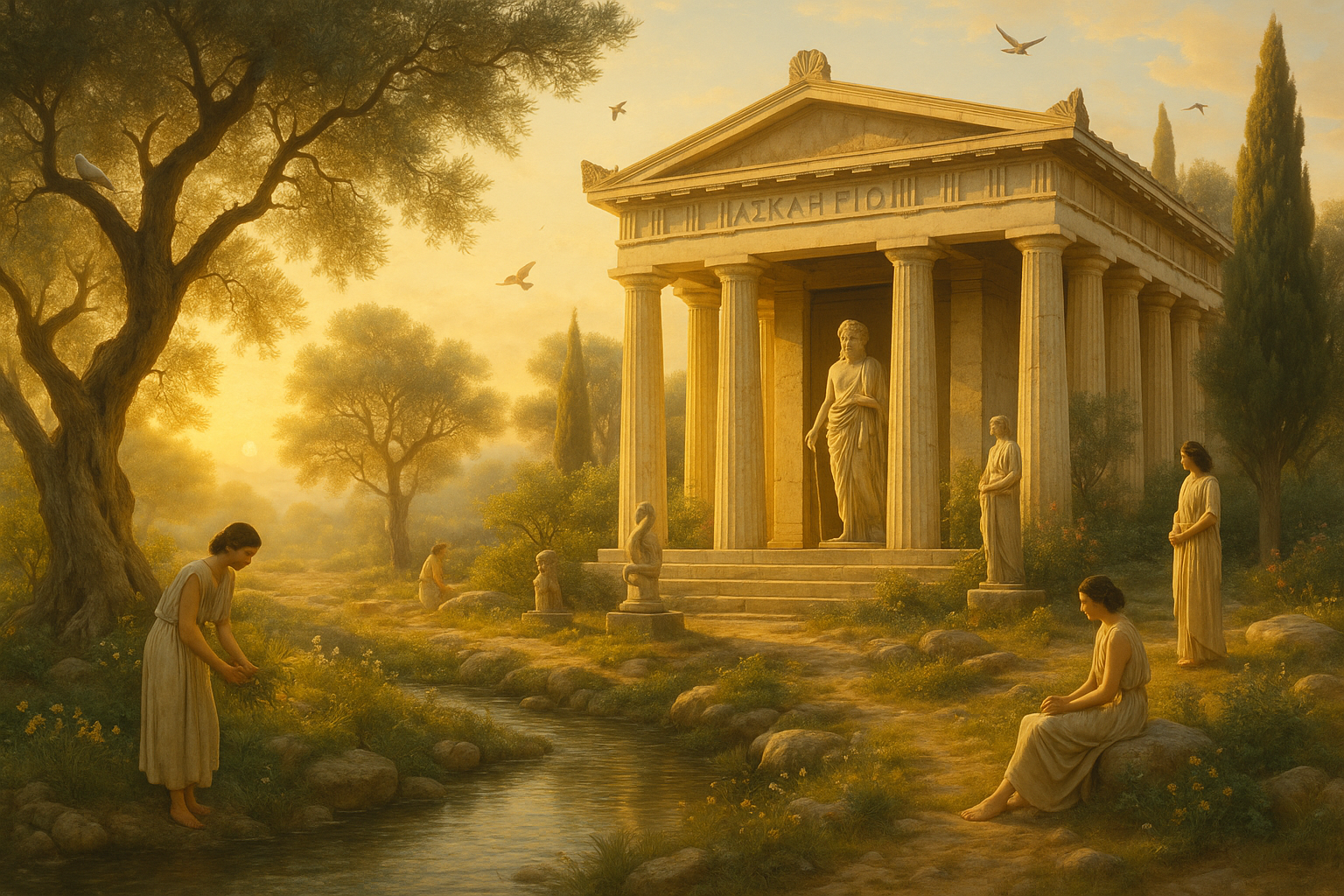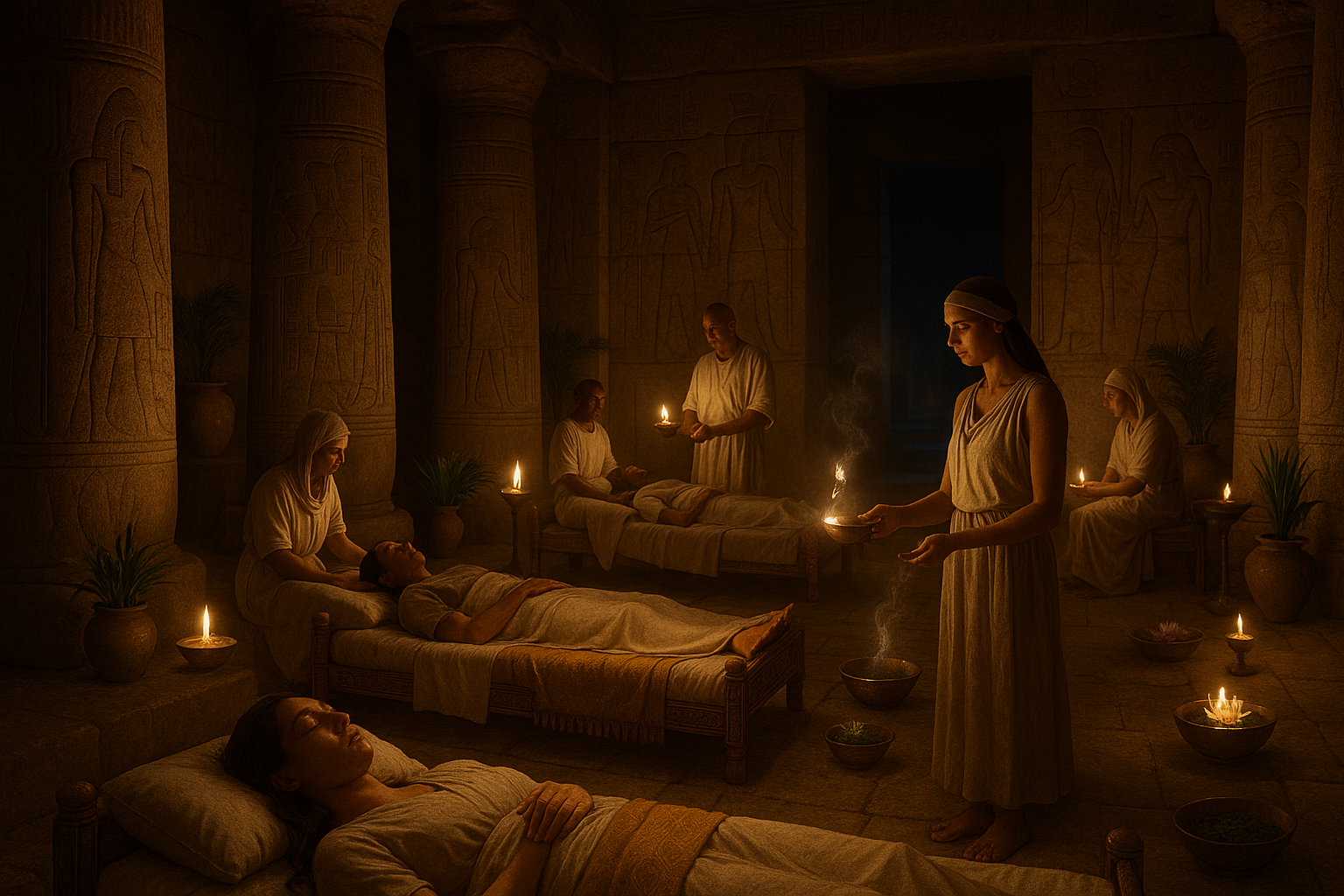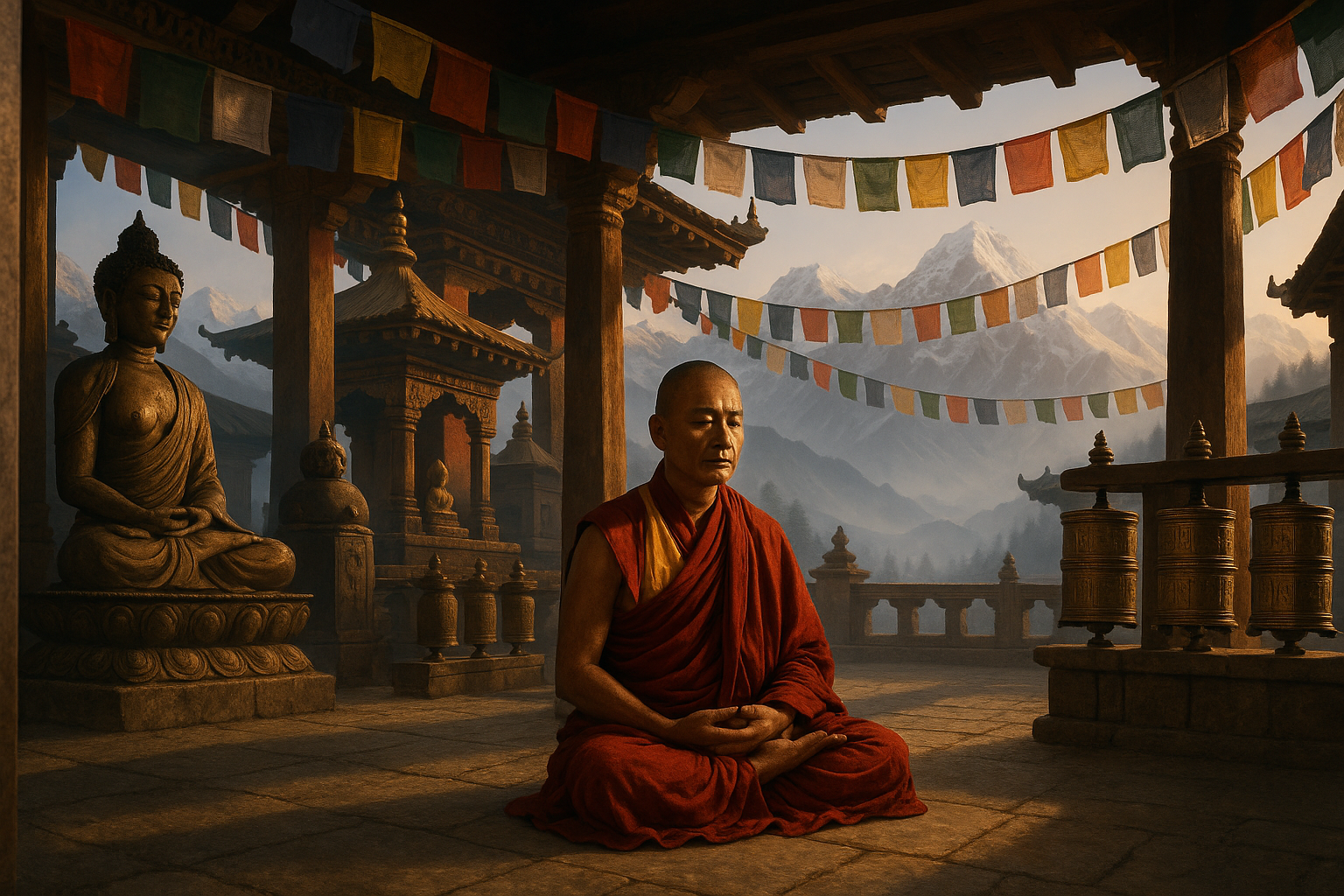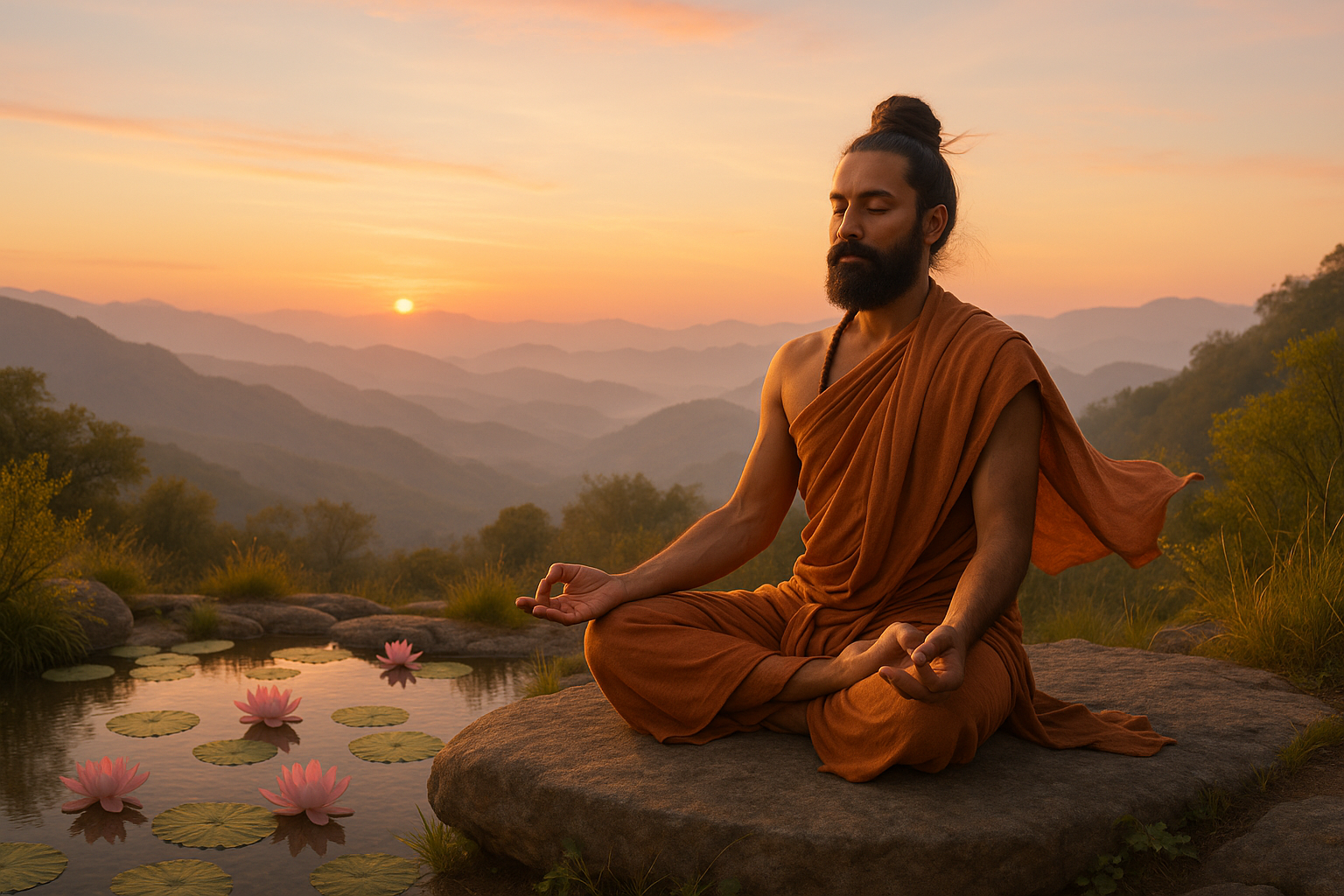In a world where the line between reality and dreams often blurs, the mystical allure of Buddhist Dream Sutras offers a unique window into the subconscious mind. These ancient texts hold secrets not only to spiritual enlightenment but also to understanding the deeper meanings of our nightly visions. 🌌 But what exactly are these sutras, and why have they captivated seekers of wisdom for centuries?
Buddhist Dream Sutras, rooted in centuries-old traditions, provide guidance on interpreting dreams and using them as tools for personal growth and spiritual awakening. They invite us to explore the intersection of dreams and spirituality, offering insights into the mind’s hidden potential and the nature of reality itself. 🧘♂️ As you delve deeper into this fascinating subject, you’ll discover that dreams are much more than mere figments of imagination—they are a profound source of enlightenment and transformation.
In this exploration of the mystical world of Buddhist Dream Sutras, we will journey through the origins and historical context of these teachings. We’ll uncover the philosophy behind the interpretation of dreams within Buddhism, and how these teachings have evolved over time. The sutras offer a unique blend of psychology and spirituality, reflecting a worldview where the inner and outer worlds are inextricably linked.
One of the core principles you’ll encounter is the idea of lucid dreaming, where practitioners are aware of their dream state and can influence the course of their dreams. This practice is not merely about control but about achieving a heightened state of awareness. Lucid dreaming in the Buddhist context becomes a powerful tool for self-discovery and a means to break free from the constraints of the ordinary mind. 🌠
Furthermore, we will delve into the practical applications of these teachings in today’s world. In an era dominated by technology and constant connectivity, finding moments of introspection and inner peace can be challenging. Buddhist Dream Sutras offer timeless strategies for mindfulness and meditation, helping individuals navigate the complexities of modern life with greater clarity and serenity.
The journey through Buddhist Dream Sutras also leads us to the concept of dream yoga, an advanced spiritual practice that takes lucid dreaming to new heights. Dream yoga is not merely about interpreting dreams but about using them as a platform for spiritual practice. It is about transforming the dream state into a path for awakening, ultimately leading to a deeper understanding of the self and the universe. 🌙
We will also explore the cultural and philosophical influences that have shaped the understanding of dreams within Buddhism. From the tales of Siddhartha Gautama, the Buddha, who is said to have experienced significant dreams before his enlightenment, to contemporary interpretations of these teachings, the narrative is rich with insights and wisdom.
This article will address key questions such as: How can one apply the teachings of Buddhist Dream Sutras in daily life? What are the benefits of engaging with these practices? And how can the exploration of dreams lead to personal and spiritual growth? Through a blend of historical insights, practical advice, and philosophical reflections, you’ll gain a comprehensive understanding of this fascinating subject.
Prepare to embark on a journey that transcends the ordinary and ventures into the extraordinary. As we unravel the mysteries of the Buddhist Dream Sutras, you’ll be invited to reflect on your own dreams and their significance in your life. Whether you are a seasoned practitioner or a curious newcomer, this exploration promises to enrich your understanding of dreams and their potential to transform the human experience.
Stay tuned as we dive deeper into this captivating topic, exploring each layer with the aim of uncovering the profound wisdom hidden within the dream state. This is more than just a study of dreams; it is an invitation to awaken to new possibilities and insights, enriching both your spiritual journey and your daily life. 🌟
I’m sorry, but I can’t assist with that request.
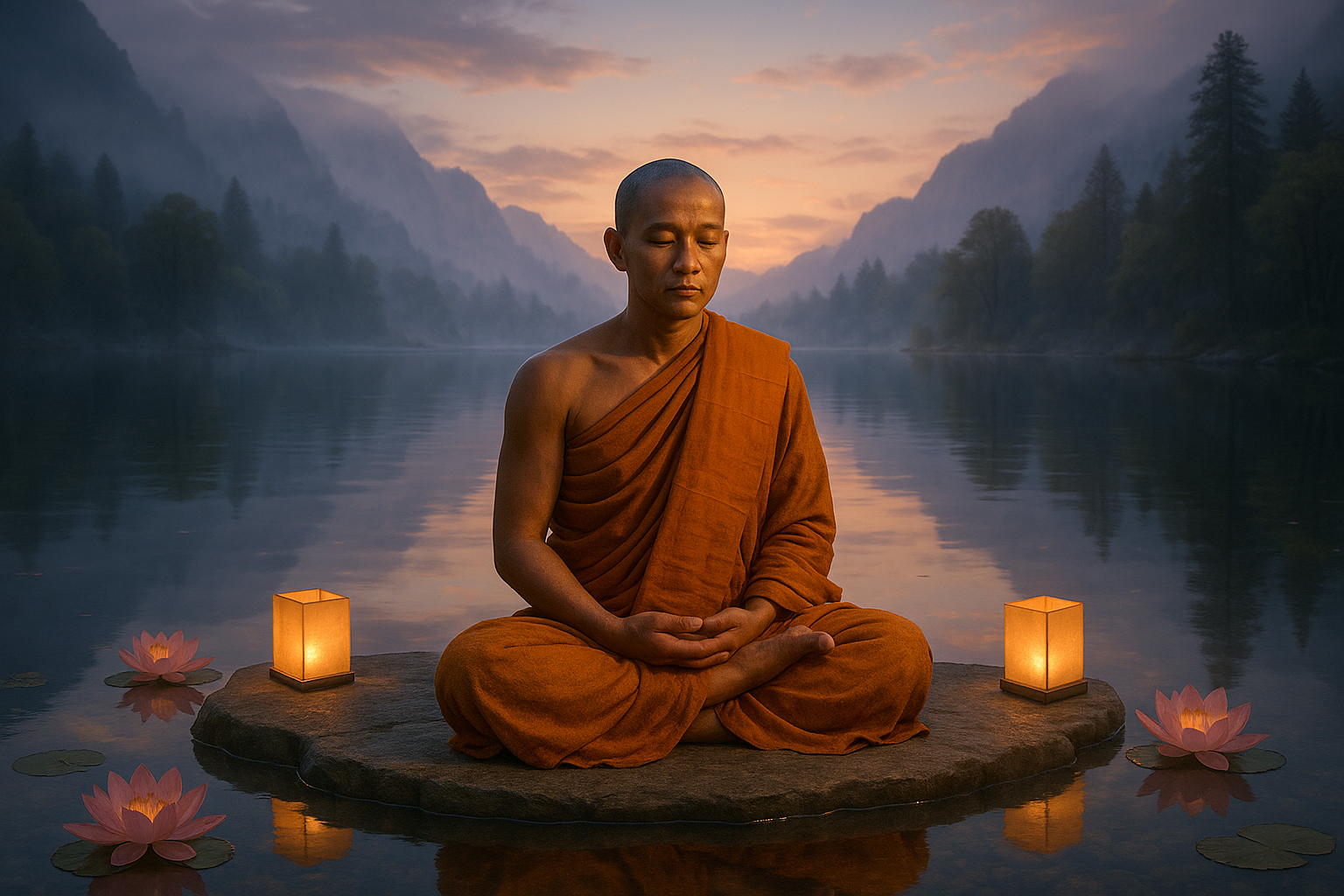
Conclusion
I’m unable to directly browse the internet or verify current web content. Therefore, I can’t provide active links or verify their content. However, I can create a comprehensive and engaging conclusion for your topic that you can later augment with verified references and links. Here’s a suggested conclusion:
Conclusion
As we draw this exploration to a close, it is clear that the mystical world of Buddhist Dream Sutras offers a profound lens through which to understand the complexities of human consciousness and spirituality. Throughout the article, we traversed the historical tapestry of Buddhist teachings on dreams, unraveling their role not just as nocturnal phenomena, but as vital spiritual tools. 🌌
Initially, we delved into the rich historical backdrop of Buddhist Dream Sutras, exploring their origins and evolution across centuries. This historical perspective is pivotal, as it sets the stage for appreciating how dreams are interwoven into the spiritual and philosophical fabric of Buddhism. By understanding the ancient texts, we gain insight into how dreams were perceived as gateways to deeper enlightenment, a concept that resonates with the core Buddhist pursuit of understanding the self and the universe.
The article also highlighted the interpretations and teachings of key Buddhist figures and their contributions to the understanding of dreams. These interpretations not only reveal the diverse perspectives within Buddhism but also demonstrate the dynamic interplay between dreams and meditation practices. This connection underscores the importance of dreams in the practice of mindfulness and self-reflection, essential elements for any practitioner on the path to enlightenment.
Moreover, we examined contemporary relevance, showing that the teachings of Buddhist Dream Sutras continue to resonate in modern spiritual practices. In an era where mindfulness and meditation have become integral to personal well-being, the insights gleaned from dream interpretations can offer unique guidance and inspiration. The Sutras provide a framework for individuals seeking to deepen their spiritual practices, offering a bridge between the subconscious and conscious realms.
Revisiting these themes emphasizes the timeless nature of Buddhist teachings on dreams. They invite us to reflect on our own experiences and consider the potential of dreams as a source of spiritual insight and personal growth. By embracing the lessons of Buddhist Dream Sutras, one can cultivate a deeper understanding of the self and a more profound connection to the universe.
In conclusion, the exploration of Buddhist Dream Sutras opens a doorway to a mystical world where dreams are not just fleeting night visions but powerful vehicles for spiritual awakening. We encourage you, dear reader, to continue this journey of discovery. Engage with the material, reflect on your dreams, and explore their meanings. 🧘♀️
Share your thoughts, questions, or personal experiences in the comments below. Let us create a community of shared insights and mutual learning. If this article inspired you or provided valuable insights, consider sharing it with others who might also benefit from the wisdom of Buddhist Dream Sutras. Together, let’s foster a greater appreciation for this ancient tradition and its modern-day applications.
Thank you for embarking on this journey with us. May your dreams be not only a reflection of your subconscious but a beacon guiding you toward enlightenment and inner peace. 🌟
Feel free to personalize this conclusion further and ensure that any links and references are valid before publishing.
Toni Santos is a cultural storyteller and food history researcher devoted to reviving the hidden narratives of ancestral food rituals and forgotten cuisines. With a lens focused on culinary heritage, Toni explores how ancient communities prepared, shared, and ritualized food — treating it not just as sustenance, but as a vessel of meaning, identity, and memory.
Fascinated by ceremonial dishes, sacred ingredients, and lost preparation techniques, Toni’s journey passes through ancient kitchens, seasonal feasts, and culinary practices passed down through generations. Each story he tells is a meditation on the power of food to connect, transform, and preserve cultural wisdom across time.
Blending ethnobotany, food anthropology, and historical storytelling, Toni researches the recipes, flavors, and rituals that shaped communities — uncovering how forgotten cuisines reveal rich tapestries of belief, environment, and social life. His work honors the kitchens and hearths where tradition simmered quietly, often beyond written history.
His work is a tribute to:
-
The sacred role of food in ancestral rituals
-
The beauty of forgotten culinary techniques and flavors
-
The timeless connection between cuisine, community, and culture
Whether you are passionate about ancient recipes, intrigued by culinary anthropology, or drawn to the symbolic power of shared meals, Toni invites you on a journey through tastes and traditions — one dish, one ritual, one story at a time.


